Angshul Majumdar
Ophthalmic Biomarker Detection: Highlights from the IEEE Video and Image Processing Cup 2023 Student Competition
Aug 20, 2024



Abstract:The VIP Cup offers a unique experience to undergraduates, allowing students to work together to solve challenging, real-world problems with video and image processing techniques. In this iteration of the VIP Cup, we challenged students to balance personalization and generalization when performing biomarker detection in 3D optical coherence tomography (OCT) images. Balancing personalization and generalization is an important challenge to tackle, as the variation within OCT scans of patients between visits can be minimal while the difference in manifestation of the same disease across different patients may be substantial. The domain difference between OCT scans can arise due to pathology manifestation across patients, clinical labels, and the visit along the treatment process when the scan is taken. Hence, we provided a multimodal OCT dataset to allow teams to effectively target this challenge. Overall, this competition gave undergraduates an opportunity to learn about how artificial intelligence can be a powerful tool for the medical field, as well as the unique challenges one faces when applying machine learning to biomedical data.
Deep State-Space Model for Predicting Cryptocurrency Price
Nov 21, 2023



Abstract:Our work presents two fundamental contributions. On the application side, we tackle the challenging problem of predicting day-ahead crypto-currency prices. On the methodological side, a new dynamical modeling approach is proposed. Our approach keeps the probabilistic formulation of the state-space model, which provides uncertainty quantification on the estimates, and the function approximation ability of deep neural networks. We call the proposed approach the deep state-space model. The experiments are carried out on established cryptocurrencies (obtained from Yahoo Finance). The goal of the work has been to predict the price for the next day. Benchmarking has been done with both state-of-the-art and classical dynamical modeling techniques. Results show that the proposed approach yields the best overall results in terms of accuracy.
Synthetic Image Detection: Highlights from the IEEE Video and Image Processing Cup 2022 Student Competition
Sep 21, 2023Abstract:The Video and Image Processing (VIP) Cup is a student competition that takes place each year at the IEEE International Conference on Image Processing. The 2022 IEEE VIP Cup asked undergraduate students to develop a system capable of distinguishing pristine images from generated ones. The interest in this topic stems from the incredible advances in the AI-based generation of visual data, with tools that allows the synthesis of highly realistic images and videos. While this opens up a large number of new opportunities, it also undermines the trustworthiness of media content and fosters the spread of disinformation on the internet. Recently there was strong concern about the generation of extremely realistic images by means of editing software that includes the recent technology on diffusion models. In this context, there is a need to develop robust and automatic tools for synthetic image detection.
Graph Regularized Probabilistic Matrix Factorization for Drug-Drug Interactions Prediction
Oct 19, 2022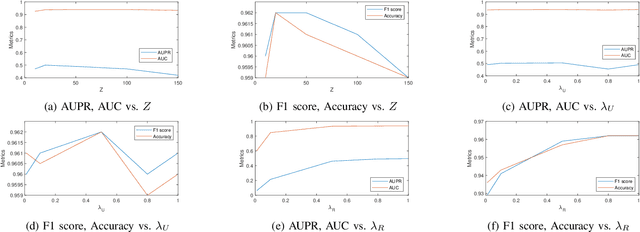
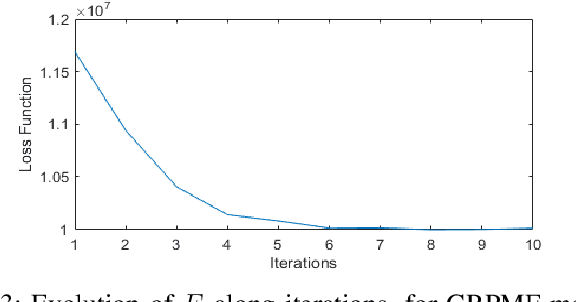
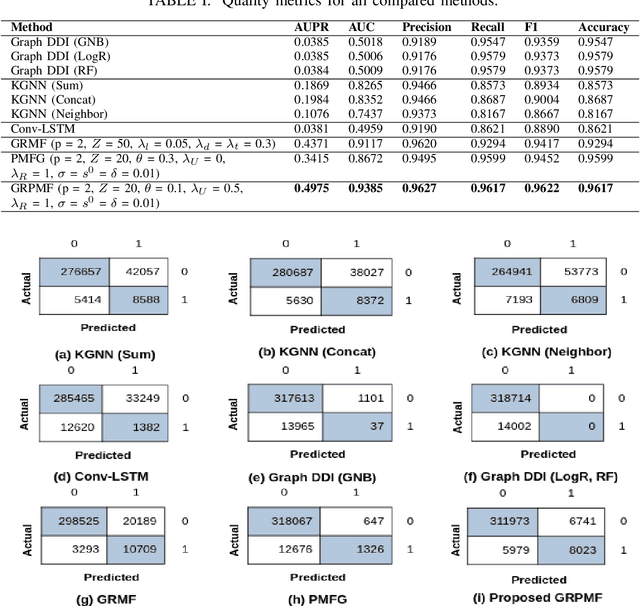
Abstract:Co-administration of two or more drugs simultaneously can result in adverse drug reactions. Identifying drug-drug interactions (DDIs) is necessary, especially for drug development and for repurposing old drugs. DDI prediction can be viewed as a matrix completion task, for which matrix factorization (MF) appears as a suitable solution. This paper presents a novel Graph Regularized Probabilistic Matrix Factorization (GRPMF) method, which incorporates expert knowledge through a novel graph-based regularization strategy within an MF framework. An efficient and sounded optimization algorithm is proposed to solve the resulting non-convex problem in an alternating fashion. The performance of the proposed method is evaluated through the DrugBank dataset, and comparisons are provided against state-of-the-art techniques. The results demonstrate the superior performance of GRPMF when compared to its counterparts.
Transformed K-means Clustering
Nov 27, 2021


Abstract:In this work we propose a clustering framework based on the paradigm of transform learning. In simple terms the representation from transform learning is used for K-means clustering; however, the problem is not solved in such a na\"ive piecemeal fashion. The K-means clustering loss is embedded into the transform learning framework and the joint problem is solved using the alternating direction method of multipliers. Results on document clustering show that our proposed approach improves over the state-of-the-art.
Sparse Subspace Clustering Friendly Deep Dictionary Learning for Hyperspectral Image Classification
Nov 27, 2021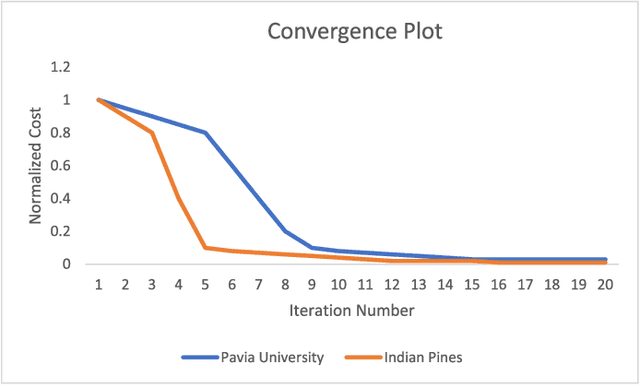
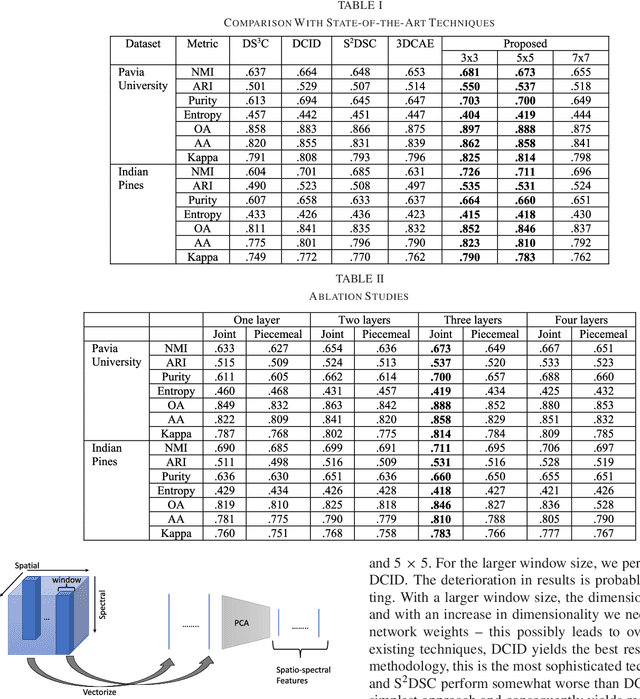
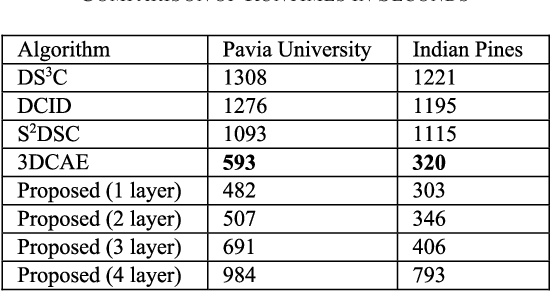
Abstract:Subspace clustering techniques have shown promise in hyperspectral image segmentation. The fundamental assumption in subspace clustering is that the samples belonging to different clusters/segments lie in separable subspaces. What if this condition does not hold? We surmise that even if the condition does not hold in the original space, the data may be nonlinearly transformed to a space where it will be separable into subspaces. In this work, we propose a transformation based on the tenets of deep dictionary learning (DDL). In particular, we incorporate the sparse subspace clustering (SSC) loss in the DDL formulation. Here DDL nonlinearly transforms the data such that the transformed representation (of the data) is separable into subspaces. We show that the proposed formulation improves over the state-of-the-art deep learning techniques in hyperspectral image clustering.
SuperDeConFuse: A Supervised Deep Convolutional Transform based Fusion Framework for Financial Trading Systems
Nov 09, 2020



Abstract:This work proposes a supervised multi-channel time-series learning framework for financial stock trading. Although many deep learning models have recently been proposed in this domain, most of them treat the stock trading time-series data as 2-D image data, whereas its true nature is 1-D time-series data. Since the stock trading systems are multi-channel data, many existing techniques treating them as 1-D time-series data are not suggestive of any technique to effectively fusion the information carried by the multiple channels. To contribute towards both of these shortcomings, we propose an end-to-end supervised learning framework inspired by the previously established (unsupervised) convolution transform learning framework. Our approach consists of processing the data channels through separate 1-D convolution layers, then fusing the outputs with a series of fully-connected layers, and finally applying a softmax classification layer. The peculiarity of our framework - SuperDeConFuse (SDCF), is that we remove the nonlinear activation located between the multi-channel convolution layers and the fully-connected layers, as well as the one located between the latter and the output layer. We compensate for this removal by introducing a suitable regularization on the aforementioned layer outputs and filters during the training phase. Specifically, we apply a logarithm determinant regularization on the layer filters to break symmetry and force diversity in the learnt transforms, whereas we enforce the non-negativity constraint on the layer outputs to mitigate the issue of dead neurons. This results in the effective learning of a richer set of features and filters with respect to a standard convolutional neural network. Numerical experiments confirm that the proposed model yields considerably better results than state-of-the-art deep learning techniques for real-world problem of stock trading.
DeConFuse : A Deep Convolutional Transform based Unsupervised Fusion Framework
Nov 09, 2020



Abstract:This work proposes an unsupervised fusion framework based on deep convolutional transform learning. The great learning ability of convolutional filters for data analysis is well acknowledged. The success of convolutive features owes to convolutional neural network (CNN). However, CNN cannot perform learning tasks in an unsupervised fashion. In a recent work, we show that such shortcoming can be addressed by adopting a convolutional transform learning (CTL) approach, where convolutional filters are learnt in an unsupervised fashion. The present paper aims at (i) proposing a deep version of CTL; (ii) proposing an unsupervised fusion formulation taking advantage of the proposed deep CTL representation; (iii) developing a mathematically sounded optimization strategy for performing the learning task. We apply the proposed technique, named DeConFuse, on the problem of stock forecasting and trading. Comparison with state-of-the-art methods (based on CNN and long short-term memory network) shows the superiority of our method for performing a reliable feature extraction.
ConFuse: Convolutional Transform Learning Fusion Framework For Multi-Channel Data Analysis
Nov 09, 2020



Abstract:This work addresses the problem of analyzing multi-channel time series data %. In this paper, we by proposing an unsupervised fusion framework based on %the recently proposed convolutional transform learning. Each channel is processed by a separate 1D convolutional transform; the output of all the channels are fused by a fully connected layer of transform learning. The training procedure takes advantage of the proximal interpretation of activation functions. We apply the developed framework to multi-channel financial data for stock forecasting and trading. We compare our proposed formulation with benchmark deep time series analysis networks. The results show that our method yields considerably better results than those compared against.
Deep Convolutional Transform Learning -- Extended version
Oct 02, 2020



Abstract:This work introduces a new unsupervised representation learning technique called Deep Convolutional Transform Learning (DCTL). By stacking convolutional transforms, our approach is able to learn a set of independent kernels at different layers. The features extracted in an unsupervised manner can then be used to perform machine learning tasks, such as classification and clustering. The learning technique relies on a well-sounded alternating proximal minimization scheme with established convergence guarantees. Our experimental results show that the proposed DCTL technique outperforms its shallow version CTL, on several benchmark datasets.
 Add to Chrome
Add to Chrome Add to Firefox
Add to Firefox Add to Edge
Add to Edge